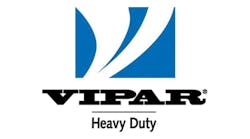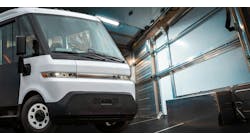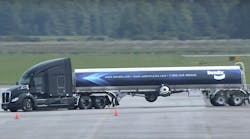Whether a fleet is large, small, or a single tractor-trailer, nobody wants to deal with a rollover: They’re dangerous, expensive, and can be damaging to a company’s reputation. This installment of the Bendix Tech Tips series provides drivers and technicians with insights on the operation and maintenance of trailer roll stability systems that are designed to help prevent rollovers.
“Full-stability systems for tractors—like the Bendix ESP system—have been mandatory on new tractors since 2017 and were standard on many makes and models even before then,” said T.J. Thomas, director of marketing and customer solutions for the controls group at Bendix. “Trailer roll stability technology provides additional protection against rollovers, whether or not the attached tractor is equipped with a stability system, which is important in situations where a fleet might not know all the specs of every tractor that hooks up to its trailers.”
Trailer stability basics
A trailer roll stability program (TRSP), like the Bendix family of TABS (Trailer Antilock Braking Systems) solutions, uses sensors and wheel-end controls to detect conditions that may lead to a rollover and then intervene through brake applications, typically before the driver realizes an intervention is needed. There are two basic types of trailer TRSPs: single-channel and multichannel.
Single-channel configurations are typically built on an antilock braking system (ABS) configuration of two sensors and one modulator (2S/1M). This is a simple and popular solution that adds less weight without sacrificing performance and allows for easy installation and maintenance. It’s also a good choice for fleets looking to add trailer stability to an existing ABS system.
Multichannel TRSPs address different demands: They’ll be easier to install on vehicles with ABS systems that are already built with multiple sensor-and-modulator configurations, such as 2S/2M or 4S/2M. Additionally, tandem axle trailers are better served by a multichannel option, since each axle is sensed and controlled. Most key components of a multichannel TRSP are efficiently housed in a single, environmentally protected modular unit.
What drivers should know
“The first thing any driver should know is what sort of stability system—if any—is on the trailer they’re pulling,” said David Dennis, supervisor of the Bendix tech team. “This is pretty easy to spot: You should be able to tell by looking at the information sticker on the trailer if it’s equipped with an ABS or roll stability. And just to be clear, if it’s got stability, it’s built on ABS. You can’t have stability without the ABS controls.”
Safety technologies like trailer stability complement safe driving practices, Thomas stressed. No commercial vehicle safety technology replaces a skilled, alert driver exercising safe driving techniques and proactive, comprehensive driver training. Responsibility for the safe operation of the vehicle remains with the driver at all times, which is why it’s important for the person behind the wheel to be aware of any system’s capabilities and possible interventions.
Monitoring a trailer stability system from the cab requires a watchful eye: There’s an amber warning lamp located on the left rear side of a trailer, in view of a driver’s side mirror. If it’s illuminated, there’s an active Diagnostic Trouble Code (DTC), and it needs to be checked out as soon as possible. Additionally, on all tractors built after 2001, the trailer will communicate issues to the tractor through the power line carrier, which enables dashboard warning lights. It’s important to note that a stability warning lamp does not mean the trailer has no brakes: It just indicates that the ABS/stability system is not functioning. The brakes will operate normally.
Drivers may also catch on to trailer stability issues by listening to the “chuff test” that the system runs at startup. When the tractor is keyed on, the air brake system runs through the process of firing the individual modulators to make sure they’re working, creating a series of clicks and “chuffs.” A system or modulator that has faulted will not produce the “chuff” sound.
In the garage
When it comes to diagnosing an issue with a trailer stability system, details matter. Drivers should try to provide as much information about the situation as they can: Do they notice, for example, that the trailer pulls during long right turns—such as on a cloverleaf—or that the warning light comes on when they go over railroad tracks? Anything drivers can let the techs know about driving situations, road conditions, or weather is helpful. Owner-operators also can examine some DTCs themselves, as the trailer sticker will include basic blink code information providing insight on the severity of the fault.
Wiring-related issues are among the most common causes of trailer stability system faults since weather and exposure can easily contribute to wire problems. In fact, many times, the system’s Electronic Control Unit (ECU) isn’t the primary cause, which reinforces the importance of knowing as much information about the circumstances as possible.
Technicians should begin by using a diagnostic tool such as Bendix ACom PRO to identify the ABS or stability system installed on the trailer. From there, deeper dives into the issue may be required, highlighting the importance of using up-to-date diagnostics.
“Safety and uptime depend on getting the right results quickly in the shop, so you need to make sure your diagnostics are equipped to recognize and support the newest ECUs and other connected components,” Dennis said. “Trailer stability maintenance is a three-step process: Identify the failure, address the failure, and clear the code. Making the right moves along the way is what will get your vehicles back on the road and rolling safely.”









